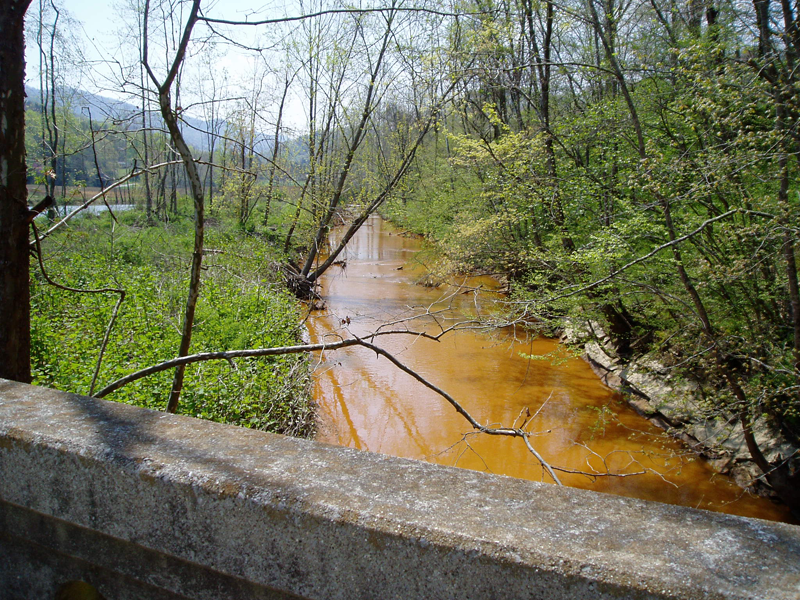Under the Surface Mine Control and Reclamation Act (SMCRA) of 1977, a percentage of the funding provided to reclaim abandoned coal mines was set aside for the mitigation of acid mine drainage (AMD) issues through the development of projects under the AMD Abatement Program. The AMD Abatement Program utilizes these AMD “set aside” funds (set aside from the AML Reclamation Fund) for projects to abate eligible AMD problems (acidic water drainage from coalmine-disturbed areas) that negatively affect the environment.
Because the reclamation of abandoned mine sites through the AML Reclamation Program has the potential to accelerate the production of AMD, best management practices have been aggressively employed to reduced or remove the introduction of AMD into the environment including mine drainage treatment and burial of acid toxic spoil.
The AMD Abatement Program uses funds set aside to treat or mitigate AMD through the processes of pH adjustment of the water by adding an alkaline reagent such as calcium or sodium, aeration allowing metals to fall out in a controlled area prior to reaching streams, settling using impoundments, and the construction of wetlands. In most applications, two or more of these processes are usually employed to achieve the desired result.
AMD is defined as water with a pH less than 6.0 where the total acidity exceeds the total alkalinity. It is caused by the oxidation of pyrite (FeS2) which breaks down into ferric hydroxide and sulfuric acid. It was reported in 1964 that 97% of AMD stemmed from coal mining. That 1964 report also stated that KY had 580 miles of AMD impacted streams at that time. By 1990, that number had increased to 2,100 miles of AMD impacted streams though many of the impacted streams had been treated or were no longer considered acidic through the use of management practices set forth through SMCRA.
AMD is produced by surface mining when the acidic coal and non-coal spoil is improperly exposed to water and run-off reaches of streams and by abandoned underground mines when water inundates the mine, exposing the remaining pyrite and setting up a situation that carries the heavy metals out the mine opening through regular seasonal drainage or a mine blowout caused by pore pressures exceeding the level that the mine backfill can withstand.